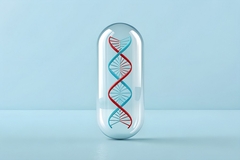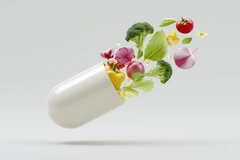Global microbial map reveals urgent need to rebuild gut, soil and food microbiomes

Scientists have created a microbial map revealing how every actor in the food system should restore and protect shrinking microbiomes to boost human and planetary health. This alarming trend affects the whole system and reveals the interconnections between microbial diversity in soil, water, and the human gut.
Other issues include antimicrobial resistance, crop failures, and increased food spoilage due to depleting microbiomes. The review blames interconnected issues, such as highly processed diets, the climate crisis, intensive farming, pollution, and overusing antibiotics and fertilizers.
The researchers underscore that microbiomes — hidden communities in these systems of trillions of bacteria, fungi, and viruses — must remain diverse and balanced to keep food safe, nutritious, and sustainable while keeping the planet healthy.
“Microbes explain everything from why strawberries rot and how farmed salmon get sick to why locally produced, minimally processed, and probiotic-rich foods are good for our health,” says first author Dr. Paula Fernández-Gómez from Teagasc Food Research Centre and APC Microbiome Ireland.
“Declining microbial health is mirrored in the health of people and the planet — showing up in dwindling food quality and availability and in rising chronic disease for animals and plants.”
Responsibilities at food system stages
The paper, published in Frontiers in Science, calls for a collective approach — across industries and people — from consumers, agricultural innovators, regulators, educators, and scientists to help protect and restore the hidden networks.
“Our paper details how microbial communities are interconnected along the food chain — revealed with the help of advanced omics that have deepened our understanding of microbiome dynamics and interactions like never before,” says Cotter.
The researchers suggest that everyday consumers can play a role. For instance, by choosing fresh, minimally processed, and locally produced food, they could help support microbiome-friendly policies.
Industries could scale microbiome-based innovation, such as in food processing, farming, and aquaculture.
Meanwhile, scientists can help by deepening the understanding of microbiome functions using experimental and omics-based approaches. Educators and communicators could raise awareness and build trust in microbiome science.
Regulators can partake by building evidence-based frameworks for the safe and effective use of microbiome-based interventions.
Multi-pronged applications
To map the microbiome, the researchers combined findings from over 250 omics studies on how microbes interact across horticulture, silviculture, livestock farming, and aquatic environments.
In food systems, they looked at microbes spanning processing, food distribution and transport, storage, markets and shops, and consumers, including how they interact with the human body.
According to the authors, microbiome solutions can protect crops against salt, drought, and pathogens. For instance, desert crops can become more tolerant of environmental stressors by using bacteria. Planting clover can lock nitrogen into the soil for plants to use, and bacteria can produce higher-quality animal feed. Recent research found that symbiosis with natural soil fungi can boost micronutrients in wheat.
They add that microbiome solutions can improve animal diets with probiotics for better health. For example, boosting the microbiome of soils can help reduce antibiotic use in livestock. Plus, they can help reduce food waste with cultures that prolong shelf life.
“Healthy microbial networks underpin our existence,” says co-author Dr. Tanja Kostic from the Austrian Institute of Technology, and the MicrobiomeSupport Association. “They drive nutrient cycling, food production, disease resistance, and environmental resilience, as well as human and environmental health.”
However, the researchers point to the challenge of identifying the functional roles of microbiomes, so culture-based approaches are needed to translate research into innovations. This could help to understand the causal links within the system.
For methods, they suggest that omics data should be combined with synthetic biology, high-throughput screening, and targeted experimental approaches to validate the microbiomes’ functions.












